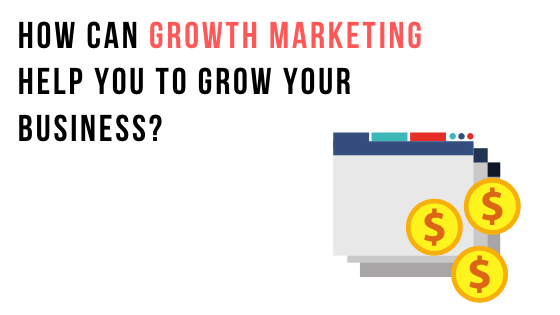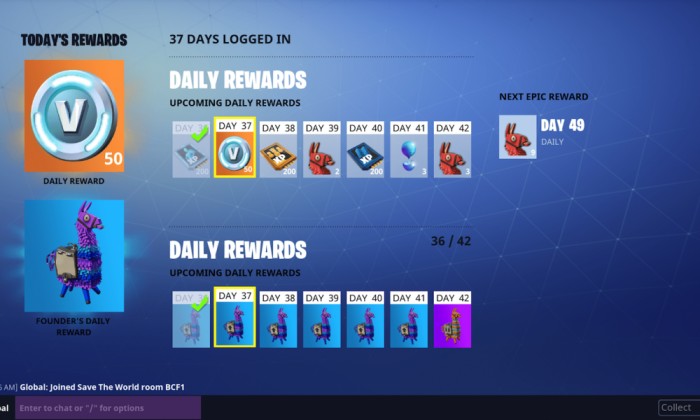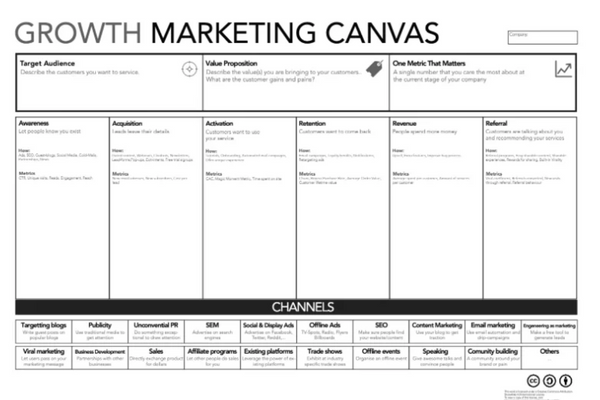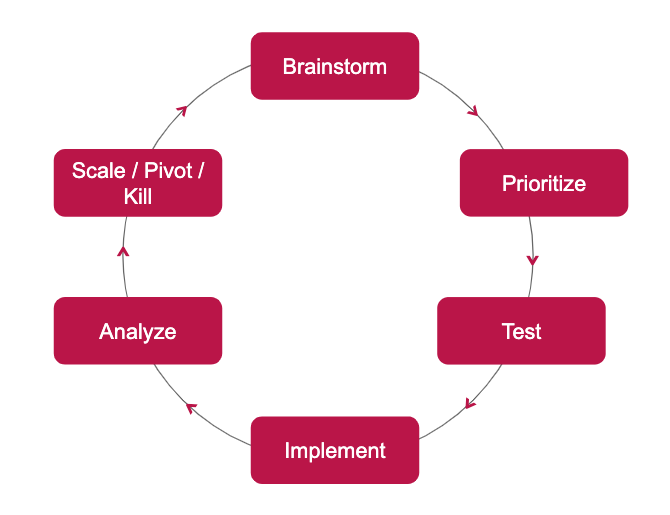What is Growth Marketing and Why Is It So Effective?

I bet you’re hearing or reading about these two a lot: growth hacking and effective growth marketing. They are the buzzwords of the new marketing era.
When a word is oversaturated and used by a lot of people, it can suddenly become unattractive to the rest. You can even build resistance to not wanting to learn about the word.
Like so many people did for Game of Thrones. It was everywhere and everybody was talking about it; meanwhile, the rest was feeling like outsiders. That feeling told them not to watch the series.
But in reality, it’s one of the best series ever.
Likewise, growth marketing is currently the best way of marketing.
So don’t miss out!
If you don’t know what growth marketing is or think it’s a buzzword, follow me and I will show you why it has become so popular. And how you can start using it to your advantage.
You’ll see why it deserves to become so popular.
If you’re a visual learner, watch this video first:
Where is the need for Growth Marketing coming from?
But since you’re a new business, you don’t have millions to spend. Nor can you waste your precious time on a three months long nonsense campaign.
Look around you. There are thousands of new businesses that start every day. This is a “wild wild” world and your brand needs to stand out.
You’re racing with time and you have few shots to take.
In that case, traditional marketing is not for you because it’s only about acquiring customers. Will they stay with you or can you upsell to them?
Marketers don’t care. They set up their long-winded, expensive and gut-driven campaigns then vanish. This spray and pray approach doesn’t work anymore.
In fact, it only worked for Sylvester Stallone and that’s all.

You need an approach that will cover all your marketing goals and fits your minuscule budget.
And this is what growth marketing does. It optimizes your entire customer lifecycle and continuously finds new ways to keep your customers engaged for more.
The campaigns? On the contrary to traditional marketing, your campaigns will be data-driven short experiments.
That way you’ll be able to understand what works for you. Moreover, you’ll have more shots to take because they’re short and cost-effective.
So yes, that’s why people are shifting to growth marketing. Because it helps you to outsmart the competition.
How? We’ll open it for you.
What is Growth Marketing?
Growth marketing is a process of rapid experimentation across marketing channels and product development to identify the most efficient ways to grow a business.
In a way, it’s an updated version of conventional marketing that mixed with unconventional strategies, new technologies and data.
It adds new layers to traditional marketing models such as A/B testing, data-driven marketing campaigns, AI, automation, SEO optimization, analysis of user experience or dynamics ads and so on.
Traditional marketers are often master at one thing like copywriting, design or video marketing and so on. But growth marketers need to know more than one thing because they have to run a bunch of different experiments.
So they should be able to design the visual, write the copy, shoot a video, edit the video, set the Facebook ads, run A/B test and then analyze the data of the ads to understand what happened.
(You can see 19 interesting growth marketing examples here.)
Growth marketers are the swiss army knives of the new age:

Growth hackers often focus on low-cost alternatives to traditional marketing. They use social media viral marketing or advertising instead of buying advertising through radio, television or newspaper.
Why is it good for you?
- It can help you to outsmart your competitors instead of outspending them.
- Growth-hacking brings a different kind of profiles together. Leading to new and innovative solutions.
- Growth-hacking generates a lot of data. This data allows you to learn more about your potential customers and what makes them tick.
But the biggest difference of growth marketing lies in its marketing funnel. Because it goes beyond awareness and acquisition with Pirate Funnel.

It’s called Pirate Funnel because of the initials (AAARRR).
As you see it’s an extensive funnel that attracts, acquires, engages, retains and eventually makes your customers brand advocates.
Now you’ll learn the meaning of these pirate metrics briefly with some examples.
AAARRR – Growth Marketing Pirate Funnel
Awareness:
In this stage, you educate your prospects about your brand and solution. Make sure people know that you exist.
Examples: SEO optimized website and articles, cold e-mail outreach, viral content, how-to videos or any kind of social media ads that focuses on spreading awareness and so on.
Like this How-to series about Growth Marketing Canvas.
This blog post is also an awareness content.
Here the growth marketer will spot the best platform and way to reach your potential customers. As organic as possible!
Acquisition:
The acquisition is the phase where you collect your prospects’ personal details.
Examples: Gated content, subscription forms, landing pages, chatbots, free trials, eBooks, cheat sheets or case studies and so on.
In this stage, the growth marketer will find new ways to collect the data from your customers. Either by creating new acquisition materials or optimizing the current forms, buttons or landing pages.
Activation:
Also known as WOW moment. People signed to your product and you need to act and make them use the product right away when they’re still interested!
For example, Twitter makes you follow at least 5 people because if you don’t follow anyone, you wouldn’t understand how Twitter works.
This stage is different for every product.
- If you have a SaaS product with a learning curve, it could be a tutorial course.
- If it’s an E-commerce shop, it could be an e-mail with a welcome message and a special discount.
Here, the goal is to find a way to activate and surprise your customers at the moment they contact you for the first time.
Retention:
The main goal here is to make customers come back to you. The best way to do this is to keep your customers delighted.
To improve retention, growth marketers might look at how to offer personalized support for customers or how to improve the value users gain from a product.
Example 1:
Starbucks loyalty program is a good example of that. It makes sure that you keep coming to get your rewards and encourages you to buy new products.
Example 2:
Mobile games are also masters of retention. Most of the games give you daily login rewards to make you play every day.

Example 3:
If you have a SaaS product, it might be an educational mail sequence that you send to your less active users. Then you can reactivate and make them use your SaaS service.
The question a growth marketer should ask here is “How can I bring customers back?”. And offer personalized offers, support or find ways to improve the customer experience.
Revenue:
Getting more money from current customers. Here the ultimate goal is to upsell, cross-sell, sign a new contract or higher subscription plan. Or you can prevent attrition and churns.
Example 1: Amazon always offers super personalized complimentary products to upsell or cross-sell.

Example 2: Applications often offer higher subscription plans to unlock better features.
Example 3: Sending messages when a user is close to their plan’s limit.
Example 4: Adjusting pricing strategies.
A growth marketer would analyze the product and run experiments around different concepts to make customers pay more.
Referral
Oh la la, people are so in love with your products they refer your business to others. But they can’t do that without referral materials.
So love alone is not enough. You need to water that love with referral campaigns and programs.
Example 1: Refer 1 friend to win X, 5 friends for Z and 15 friends for Y.
Example 2: Many E-commerce shops send emails with special referral codes that unlock a discount when you share them with your friends.
Example 3: Dropbox grew 3900% with a simple referral program.

Now you know how extensive the funnel is and what each phase stands for. Let’s discover something you don’t know next.
The process of implementation.
It is fast, agile, cost-efficient and super beneficial for companies that grow fast in a shorter time.
How does the Growth Marketing process work and what are the benefits?
The funnel is long and extensive but the implementation is surprisingly short. Do you want to walk through the process together? Cool!
Let’s picture a story.
Michele is the CEO of a SaaS company, and her goal is to double her ROI this month. She wants to work with a growth marketing agency (hopefully it’s us).
Day One
The first day of consultancy starts with a warm-up round. Here the team or consultant will try to understand the current situation of the company.
On the same day, her team and the agency will do the Dealbreakers exercise together. Briefly, it’s an exercise that uses negative thinking to spot where the company falls short.

They will then turn all these negative things into actionable growth marketing experiments, strategy changes or product iterations.
If you want to do it yourself, you can click the link above to get your digital copy. Then watch the How-to series from here.

Since Michele has a SaaS product, free trial sign-ups are critical for her.
So they’ll brainstorm on all the pirate funnel stages and find marketing experiments ideas that could potentially leverage free-trial sign-ups.
Then they’ll qualify the experiments with the team and decide the first steps together.
Beginning from the first day, Michele will have done a small checkup, two hands-on exercises, a growth game plan and acquired tens of actionable growth marketing experiments.
Following days.
Now it’s time for the execution. Here the growth marketers and Michele’s company will work together to implement the experiments.
Ok, but why is the growth marketing agency not doing the experiments by themselves?
Because the focus of the agency here is to transfer all the knowledge and growth marketing mentality to Michele’s team. So, the team could understand and use the strategies they learned from the sprint in the future.
You can think of it as a crash course and implementation at the same time.
Since most of the experiments can be implemented in a few days, your first set of experiments will be done in a week or two.
A growth consultant will analyze the first results and depending on the data findings, they’ll kill, scale or pivot the experiment.

Killed? They’ll get the takeaways and design a new experiment with the findings.
Scaled. That’s good news, Michel’s campaign is working now they’ll scale it to double, triple etc.
Pivoted. The campaign is good but can be better with a few tweaks, so it’ll be iterated and run more one more round.
You see. It’s a fast-paced hands-on experience and most of the business owners are really surprised by this process. Especially when they start to feel the benefits!
What are the benefits of growth marketing?
- It’s cost-efficient: you can save lots of money with small experiments and scale up once you find what works for you. No more throwing tens of thousands and praying.
- It’s super fast: time is currency too. You’ll be in the process and witness how fast it can go and save you tons of time.
- Data-driven: no more gut feelings. You can measure all of your marketing efforts and know exactly where you’re heading.
- Hands-on experience: you’ll learn the strategies and understand growth marketing mentality as you cooperate with a growth marketing agency.
- It solves all of your problems: growth marketing tackles all your challenges with the Pirate Funnel.
- Automation: thanks to growth marketing tools, you’ll leave most of your dull manual tasks to automation.
A scratch to the surface
I hope this was a good introduction for you. You might be asking yourself some questions such as:
“ Okay, but what are these experiments?”
“ What are those automation tools and how can they help me?”
“ How do you measure the experiments?”
“ What is A/B testing, SEO and AI?” and so on.
“What is the difference between growth hacking and traditional marketing?”
Because yes, this is just a scratch to the surface. But we have inspiration sessions if you want to learn more.
Those are free one-hour power sessions, where we explain all the aspects of growth marketing with real Belgian examples. Also, at the end of each session, we have a Q & A so you can fire all your questions related to growth marketing.
But if you’re a hard reader like me and want to keep reading about growth marketing, you can go here and pick your next article. Learn how to accelerate your business with the latest B2B marketing techniques. Fill your calendar with appointments, use automated funnels to nurture prospects and close clients with advanced growth marketing tactics.
Hope you learned something new by reading this!
See you around.
